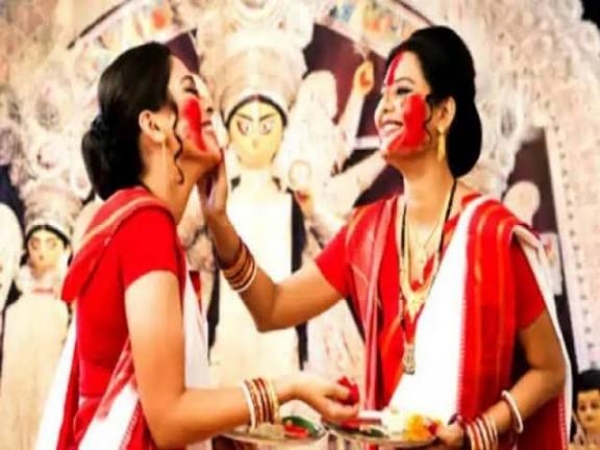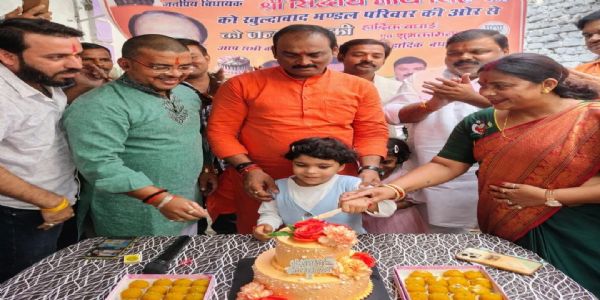
Kolkata, 1 October (H.S.):Durga Puja in West Bengal is celebrated across India for its grandeur, devotion, and distinctive cultural traditions. As the five-day festival moves towards its conclusion, Thursday marks Maha Navami, leading to Vijaya Dashami, the day when the idols of Goddess Durga begin their ceremonial immersion. In Kolkata alone, nearly 4,000 idols are set to be immersed from Thursday onwards. Yet, before the farewell, one ritual stands out as the most iconic symbol of Bengal’s Durga Puja — “Sindoor Khela.”
The history of Sindoor Khela dates back several centuries to the zamindar households and royal families of Bengal, where Durga Puja was first observed in a community setting. Since then, the ritual has become inseparable from Dashami celebrations and continues to be performed with the same zeal every year.
--------
The ritual of vermillion
On the morning of Vijaya Dashami, married women gather at puja pandals and in homes where idols are worshipped. They first offer vermillion (sindoor) at the feet of Goddess Durga. Afterwards, they apply the same sindoor to each other’s foreheads, partings, and cheeks, resembling the application of abir (colored powder). Dressed in the quintessential red-and-white saris, the women break into songs dedicated to the goddess, dance to the rhythm of the dhaak (traditional drums), and sway in joy.
This vibrant dance, often performed with earthen lamps, has a name of its own — “Dhanuchi Naach.” The sight of women drenched in vermillion, their faces lit with both color and devotion, transforms the farewell into a carnival of faith and festivity.
Sindoor Khela is not merely symbolic — it carries a deep meaning for married women. The ritual is believed to invoke the blessings of Goddess Durga for the long life and well-being of their husbands. “For us, Sindoor Khela at the end of Durga Puja is very special. It is our prayer, our faith,” says Jayashree Ghosh, a devotee. “There is hardly any woman who does not wish for the longevity and happiness of her husband, and this ritual embodies that desire.”
------
Celebrations in Kolkata’s traditional households
The old aristocratic households of Kolkata — such as the Shobhabazar Rajbari, Banerjee Bari, and the Bose family residences — continue to prepare for the ritual in their own grand style. Women in these families have already set aside their sindoor and traditional attire for the occasion. At the Datta Bari in Hatkhola, Sindoor Khela was observed as early as Ashtami, but for most places across the city, the celebration begins Thursday morning with full fervor.
-------
A farewell colored with joy
The last day of Durga Puja is also one of the most emotional. The immersion of the goddess symbolizes her departure to her heavenly abode, leaving devotees with tears of farewell. Yet, Sindoor Khela infuses this farewell with color, music, and joy. It transforms sorrow into celebration, turning Dashami into a moment where farewell meets festivity.
For Bengal’s women, it is not just the end of the puja but a union of faith, tradition, and emotion that makes Vijaya Dashami the most poignant and colorful chapter of Durga Puja.
Hindusthan Samachar / Satya Prakash Singh








